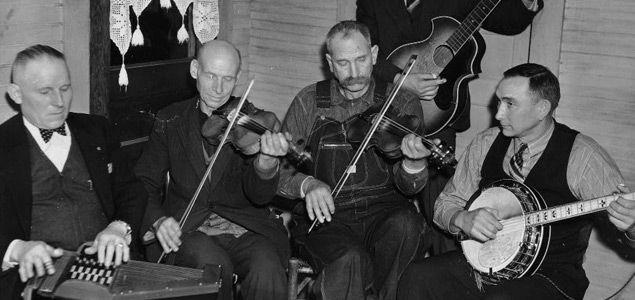
Bog Trotters Band. Virginia, 1937. Source: Wikipedia.
The aim of co-creation workshops with open DNA is to collectively explore different possibilities for building projects and initiatives in connection to the Commons, in terms of open tools, data and contents. Where participants have the opportunity to generate in agile ways new scenarios, to learn and discuss about different open approaches and to prototype solutions based on their own goals, background and needs.
Co-creation for what?
Evolving from the field of corporate organizations that started to embrace design thinking of new products and services some years ago, co-creation and co-design processes involving the “end-user” or “client” have raised recently in many ways and shapes. Usually, however, in closed environments where knowledge is gathered as strategical value, processed and packeted only afterwards in order to enter the Market. Also based on different interpretations of the core philosophy of collaborative creation, aligned in many cases with the most “egoist” versions of crowdsourcing, where ideas and energy from the “crowd” generate material or non-material goods for a proprietary organization, which only at the end of the production process are back available to society (but then too much constricted with a specific prize and shape).
But what happens when these collaborative design contexts can be based on already open existing content, products or dynamics? And specially, when the whole process can be inclusive, transparent and reusable? For us, these questions link directly to the need of generating common goods under copyleft licenses or other type of guarantees for disseminating, appropriating and building on top of outputs, specially in relation to the new paradigms of the sharing economy and collaborative consumption. From NGOs to civil associations and the third sector, but also cultural institutions, local governments, even start-ups and social entrepreneurs of all stripes, when it comes to generate value and sustainable solutions, digital applications, innovative services, cultural goods, etc. (both from a non-profit or for-profit perspective) the real challenge and opportunity is to do it considering the “open DNA” of things.
Our (open) background
With that perspective, we started two years ago the co-design, development and viable version of Goteo, an open source crowdfunding platform which now we claim has helped to reach so far more than 1,5M euros (and hundreds of non-monetary collaborations) for projects which generate social value in the shape of collective benefits. From music and audiovisuals, to manuals or designs, source code, even business plans and open data, we confirm every day that each project has something valuable to share digitally, and their knowledge or creativity can find a way in the open ecosystem aligned with Creative Commons licenses or similar ones.
But apart from improving and managing Goteo, another of the important fields of action for us is the “co-creation factor”, where from the early beginnings of the tool we started in parallel to facilitate crowdfunding workshops with different communities of practice and interest, applying our own methodology based in previous workshop experiences leaded by Platoniq like the Bank of Common Knowledge, Ideiazoka / Market of rebounding ideas or UrbanLabs, as well as participating (sometimes with a bit of frustration about ephemeral results) in hackathons, barcamps and other type of unconferences.
Our #learnbyfunding sessions gather people and institutions with projects already in mind or already prototypes, where they can discuss, understand and share important aspects of collective funding in order to prototype their own campaigns, as well as define the type of copyleft outputs which can represent the best “win-win” for them, during and after their crowdfunding processes. These methodologies are based on several dynamics of changing roles (from backing to assessing or communicating a campaign), group discussion and decision-making, collective weighing of indicators and values, and open comparisons and brainstorming about rewards and collective benefits.

These basis aligned last year with the opportunity of being part of the eCreative project along with main international institutions like Europeana, Kenninsland, Aalto University, the British Library or the European Network of Living Labs, among others, with the goal of promoting greater re-use of cultural heritage resources by Europe’s creative industries. There we started to work closely with stakeholders, developers, potential end-users and content institutions as responsibles for the design and facilitation of several co-creation workshops for ideating and developing new apps and digital products which show, as proof of concept, the potential for re-using of digitised content in new products and services. In fields like tourism, education, design, social networks, remixing different techniques and principles from design thinking, rapid prototyping and agile development, we observed its evolution and results as a whole workshop after workshop, as facilitators embed also in the development and evaluation processes of the co-created applications. Also sharing meantime results of the methodology as a work in progress, trying to balance openness with interesting enough knowledge.
Breaking the ice: who’s who, but also a mobile map of skills
Ok, now let’s imagine we start the co-creation workshop. It’s moment zero and we seem to have a lot of time and things to do in front of us. But we have to do it together, one way or another. One of the things we have learned after (literally) hundreds of workshops in recent years, is that there should be always a way of breaking the ice for participants which works, also, as first step for the dynamics that have to be built afterwards on top of each other.

In this case, accreditation comes as an opportunity not only for knowing who’s finally attending or not, but as a really good chance for people to identify themselves further than just giving their name, twitter account or organisation. What if they also choose one role available from a sticky badge, ideally with a nice pic on it? How many developers or tech people are in the room? Designers and creative minds? Stakeholders, institutions? Potential end-users? Coordinated with the previous invitation or dissemination of the workshop, and of course the specific context of the desired co-creation process, that simple way of identifying different skills, interests or background in the space, apart from socially constructive, could be critical for guaranteeing afterwards a good mixture of people in different groups.
Minimum shared context, and rules of the space
Because it’s all about working in groups, and iteration. More specifically: breaking into small operative units of people, which can manage to discuss and create together. Then reporting to the rest, comment and decide collectively. Then breaking into groups again in order to go further. For doing this, the “rules of the space” should be clear but minimum. For example we encourage adapting some of the principles from open space technology, which for us usually make a lot of sense.
But before starting to build things “the co-creative way”, in the majority of cases is critical also to establish a good groundfloor for context, examples, issues, in a pre-defined area [which will] where the results of the co-creation want to create an impact. Starting by each participant bringing, ideally via the screen of a tablet or smartphone, an example or case of what they consider a good practise (app, portal, service, content, etc) and comparing them in pairs. Selecting one and sharing why with the rest, using some “thermometers” to balance important indicator levels like innovation, engagement, feasibility, etc. usually seems to help also starting to establish common criteria for deciding things together.

More context? If very short and focused, lightning presentations at the beginning about examples (not just concepts) of copyleft, open data or content, transparency, innovative solutions, etc. may also help a lot to make sure no one is left aside with insufficient knowledge around the topic.
Structured scenarios for classification, combination and selection
The core starting point of the co-creation is the scenario (well, and the “persona” or end-user, more about that in another section below). But for generating, sharing, discussing and even remixing them, scenarios need some structure. In this case, we invite participants to imagine them in a sentence divided in no more than four postits, of different colours for each part. Without being strictly the same, scenarios can have something in common with the user stories that software developers need for their programs, starting as a simple sentence with “What if as a…”, and then adding a first temptative reference to who is going to be [the] type of user active in (or benefiting from) that co-created scenario.

Then, as a second part of the structured scenario, comes the type of use, the action. For example “…I could…” using at least one descriptive verb. Then we encourage to add to the scenario no more than two additional parts for that sentence, which anyone can produce imagining the best solution possible for a given context or area. It could be in this case “…with…”, pointing modularly to open content online with the right Creative Commons or other licenses alike. The final part in this case should be stressing the goal of the scenario, the final objective described in short but clear, like “…in order to”.
It may sound too simple, but it’s amazing the type of combinations that can emerge brainstorming like that with small sentences. The whole point of having the scenarios described across different color postits, as a modular structure, is that then is easier to recombine them (when they focus on the same user or goals, for example), in order to discuss such outputs better before the selection process.
Narrowing down: collective decisions
Because at this point in the co-creation methodology we describe here, is important to say yes or no together, selecting at the end only a few scenarios. To take collective decisions, basically, in order to narrow down possibilities according to what participants find more interesting or valuable in these results. So first there should be room and time for each group to report about the scenarios they have created or combined. For doing it so, one useful technique is to propose initially an ad hoc classification of sub-themes or sub-areas within the main topic of the workshop. Resulting in different spaces on the wall where to place the scenarios, that should help to form new groups and even remixes between all the scenarios produced in every group.

Once all the scenarios selected from each group have had the chance to be briefly presented, with further discussion when needed, is time to apply a method for selecting the ones which are going to be taken further as co-designs. For that, one possible “qualitative” way depending on the number of scenarios (if there’s not so many) is to use again the indicators from the initial session, forming an axis with two of them of positive and negative values. In most cases, in order to balance each scenario and place it in relation to its level of innovation and feasibility for development perceived by participants. As an organic discussion, each argument in support or against these indicators for a given scenario will move it across the axis, where at the end the ones with higher scores in innovation and feasibility whould be the chosen ones.
However, the previous approach may require a significant amount of time and is not usually viable when there are lots of scenarios covering the wall. Here is where a different technique, more aligned with the principles of dotmocracy, can be useful in order to detect the scenarios that catch on the majority of participants. With a limited number of green dots as positive, anonymous votes, which will give the statistical interest in scenarios at a glance, and also red dots for indicating, rather than dislikes, the perception from participants which expert in an area (development, strategy, design, usability, licensing, etc) [that there are] some obstacles or things to consider as complexity in a given scenario.
Prototyping: define personas and collage around them
For the time when the best scenarios have been selected and re-discussed (and the dismissed ones kept for documentation), many participants would have already an interest in some of them. Then is time to form small groups again, following the law of two feet, where the main goal is to generate something more visually concrete. For each scenario, detailed personas should be addressed first. Who is going to be the end-user, or main actor, in the product, service or process we describe? What does he or she like, or is used to do? Who else should take part? Imagining those archetypes is important for many reasons. They are the central point of the co-creation process in order to define the needs, wants and limitations of the product, service or process, as defined in the user-centered design paradigm.
Once we have defined them a little bit more, filling special cards, it’s time to build around them the most clear diagram possible. When the content aspect is important, in applications, digital platforms or other type of knowledge oriented areas, like for example Europeana assets or other type of copyleft user-generated content, it will be also handy to prepare in advance visual cards (with images, text, QR codes for multimedia files, etc) which can be also connected graphically to the personas. What goes in between, as visual explanations of the relationships and actions of every item following the scenario description, should be up to participants and the materials they have on the table, by simply drawing or cutting and pasting. Slightly moderated from facilitators, apart from time management (and only when there’s some positions or technical aspects blocking progress), the provision of color markers, icons and symbols, pictures or magazines, even “3D raw materials” like Lego pieces or plasticine usually are enough for freeing creativity and manual brainstorming. This could be also an intense discussing and “P2P learning” session, while building metaphoric explanations that should describe a process, afterwards explainable from beginning to end to the rest.
Present and keep asking, prepare for SCRUM
It may sound light or simple until now, but is not an easy set of activities at all in order to prepare, facilitate and manage, specially when properly adapted to the type of context and participants for which the co-creation should take place. The reader following this methodology overview should consider that, in our experience, a minimum of one day or 6 to 8 hours ideally is needed in order to go through all the steps (with enough coffee breaks, time for lunch, even a short guided tour through the venue 🙂
Reached this point, when all groups have done their best to collage in 2D or even 3D around the personas for each selected scenario, it’s time for final presentations, when ideally a videocamera (or smartphone) should document how one or two people from each group guide the rest through the details of their prototyped idea. Followed by a questions and answers round, these co-created solutions may still need more clarification and, specially, a clear set of tasks behind in order to develop them.

Here’s where the concepts of minimum viable product and agile development can help. Even if there’s not enough resources or compromise in the short term among participants for developing the product or service, their inputs are still needed for collectively identify what would be needed in order to make an alpha or beta version of those co-created “2D prototypes”. So using simple columns on a wall for each co-creation, separating types of task (programming, strategy, design, content, etc, depending on the type of output), participants according to their skills, experience and knowledge can move from one to another just adding postits. Each ticket there should describe, in the less technical way possible, just one task or thing to do, needed in order to develop the co-designed product or service. They configure the “Scrum backlogs”, which afterwards a team could expand, fork or prioritise when entering in production mode.

It may sound like a very open and unstructured way of finishing the sessions, but it really needs to be like this in order to adapt to the real potential of a given number of people, time and resources to develop a co-created product this way. Is there a real compromise and the conditions needed for developing it? Then the lists in every backlog should help to finally determine what’s more doable, and another voting round will define the winner in terms of what to develop (and additional “B plans” too). Also focusing on the business model canvas of each possibility should help to decide. There’s no initial money for an operative prototype or minimum viable version? In that case the backlogs should be estimated also in monetary terms, configuring the minimum and optimal costs in order to enter into “crowdfunding mode”. Or maybe there’s time, energy and skills enough in the room for keep on working? Then we may have a solid base for entering into “hackathon mode”, rather than just programming in the vacuum like sometimes happens in these type of events…
It’s the iteration!
While as stated before, the receipt for presential co-creation processes in our opinion relies significantly on dividing into small groups (with clear instructions and examples), gather feedback together and then redistribute again in small productive units, is also true that for these iterations to work effectively different factors should align. Motivation, the space itself and even comfort aspects, to what extent it happens isolated or embed in a wider program like conferences or meetings (thus making [it] more complex to manage and have enough time or energy), etc.
As a methodology under perpetual beta, also, it iterates with itself and learns from mistakes and adjustments. We have started to use it in different environments related to open content and open data, culture, tourism, education, with digital implications at one moment or another (and specially re-usable results), but although we have the impression that it could be adapted to complete offline needs and scenarios, we’re not there yet.
However, we have the impression that as well as many other voices from the social innovation or the cultural sectors are starting to state, there’s good room for starting to apply this type of co-creation processes in more contexts. For us the question remains the same: to what extent with the open “DNA” as a central point?
Based on Platoniq experience with a set of design thinking and agile methodologies for collective creation.
Images by: Platoniq / Maarten Brinkerink / Katharina Holas / Susanne Tremml / Kedume.

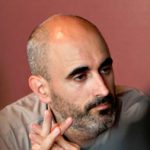
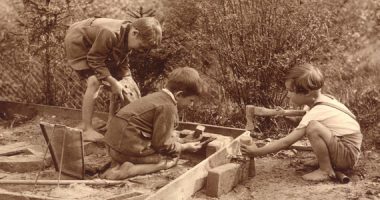
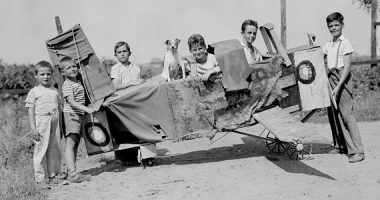
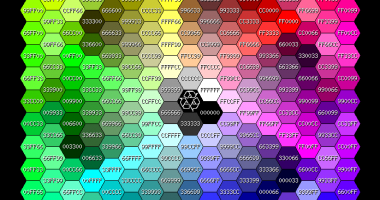
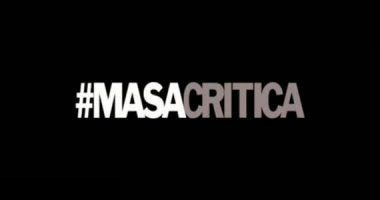
José A. Galaso | 22 March 2014
Enric
Al Cesar lo que es del Cesar.
Urbanlabs es un proyecto de Citilab y se ve si sigues el link, como algunas de las fotos que aparecen en este post.
También muchas de las actuaciones y metodologías de las que hablas.
Por el contrario no hay ninguna referencia a ello. Mal para ser un post que se recrea en el Creative Common.
Por el contrario Goteo es un proyecto magnifico y fantástico que está haciendo una gran labor en este ámbito y que es necesario que siga dando la imagen de confianza que se merece y que tiene de sobra acreditada.
Seamos pulcros con las palabras y veamos en nuestras raíces la forma de proyectar el futuro con fuerza.
Saludos
Enric Senabre | 26 March 2014
Hola José Antonio!
Gracias antes de nada por leer el artículo 🙂
Nadie dice que UrbanLabs no sea (o fuese, mejor dicho) un proyecto “de” Citilab, tal como muestra la carátula del vídeo efectivamente al seguir el link. Pero tampoco lo contrario 🙂 Yo hablo de una metodología “basada en experiencias de talleres anteriores dirigidas por Platoniq” y por tanto creo que es lícita la expresión, que se refiere (independientemente de quién provee la infraestructura o los recursos) a quien ensambló la metodología y a quien co-facilitó esos talleres, concretamente los de la segunda y última edición en 2009. En el original inglés era “leading” como “lideradas” en vez de “dirigidas”, pero ése me parece un muy leve matiz…
Estás en lo cierto en cuanto a una foto (que no fotos) que acompaña el post, concretamente la tercera de la primera fila por la derecha. Ya he pedido que añadan la referencia de autoría junto al resto que hay al final del artículo, pero no de Citilab sino de @Kedume que veo es el autor: http://www.flickr.com/photos/kedume/4069489165/ El resto de fotos creo que están adecuadamente referenciadas.
Si a parte de ese detalle de la mención a UrbanLabs me puedes pasar el link de alguna metodología o actuación de Citilab que mencione y no cite, encantado de conocerla, pero sinceramente no caigo en ello. De haber considerado alguna habría añadido el link para que se amplíe información, igual que con el resto de metodologías que se enlazan y recombinamos en la práctica. Creo que ya dejo claro (al menos en la versión original en inglés, puede que dé para otras interpretaciones la traducción a castellano o català) que en todo esto no hay nada nuevo bajo el sol sino mucha recombinación. Además para mí enfatizar que algo es “tuyo” o “mío” en este caso es no haber entendido del todo el contexto de la co-creación (ni la complejidad de citar fuentes de prácticas, de algo que está constantemente metarfoseado y no es contenido sino “continente”). En cierto sentido, si me permites que reutilice tu cita, es como referenciar la autoría de la receta de la ensalada César cada vez que se menciona 🙂
En fin, ahí está en el texto la profusión de links a más información y trazas digitales que creo útiles sobre muchas ideas, formatos y técnicas a rastrear y experimentar en todo esto, igual que hemos hecho nosotros. Algo también totalmente ampliable y discutible en cualquier caso.
Espero la extensión de mi respuesta sirva, al menos, para citar como se merece el Citilab y el fantástico trabajo que dicha institución lleva años haciendo en innovación social y educativa, dando oportunidades y marcos de testeo a los que como yo hemos podido aprender y desarrollarnos profesionalmente allí.
Salut,
Enric
Kedume | 04 April 2014
Gracias por referenciar la autoría de la foto Enrique.
Equip CCCB LAB | 04 April 2014
De nada, es lo mínimo.
Leave a comment